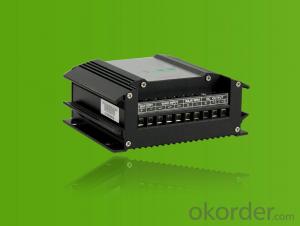24v Hybrid Solar Inverter
24v Hybrid Solar Inverter Related Searches
Canopy For Solar Inverter Awning For Solar Inverter Solar Inverter For Rv Inverter For Solar Quality Solar Inverter Best Solar Inverter In Kerala Top Solar Inverter In Pakistan Plug In Solar Inverter Solar Inverter In Pakistan Spd In Solar InverterHot Searches
Type Of Inverter For Solar Types Of Inverter For Solar Used Solar Inverter For Sale Inverter Size For Solar System Solar Edge Inverter For Sale 5kw Solar Inverter For Sale Solar Inverter For Sale Solar Inverter For Battery Solar Inverter For Split Ac Solar Inverter For Laptop Solar Inverter For Fridge Solar With Inverter Price Solar Inverter With 2 Battery Solar Inverter With Ac Outlet Solar Inverter Price In China Best Solar Inverter In China Solar Inverter Price In Dubai Solar Inverter Price In Uae Solar Inverter Price In Kenya Solar Inverter For Fridge24v Hybrid Solar Inverter Supplier & Manufacturer from China
Okorder.com is a professional 24v Hybrid Solar Inverter supplier & manufacturer, offers integrated one-stop services including real-time quoting and online cargo tracking. We are funded by CNBM Group, a Fortune 500 enterprise and the largest 24v Hybrid Solar Inverter firm in China.Hot Products
FAQ
- A grid-tied solar inverter works by converting the direct current (DC) electricity generated by the solar panels into alternating current (AC) electricity that can be used to power household appliances and be fed back into the electrical grid. It synchronizes the frequency and voltage of the solar-generated AC electricity with that of the grid, allowing seamless integration and transfer of power. This inverter also ensures safety by monitoring the grid connection and automatically disconnecting the solar system from the grid during power outages or maintenance work. Overall, it enables efficient utilization of solar energy and allows homeowners to reduce their reliance on fossil fuels while potentially earning credits for excess electricity generated.
- Yes, a solar inverter can be used in areas with unstable grid connections. Solar inverters are designed to handle fluctuations and interruptions in the grid power supply. They typically have built-in features such as anti-islanding protection and grid support functionalities that ensure safe operation even in areas with unreliable grid connections. These inverters can switch seamlessly between grid power and solar power, providing a consistent power supply to the connected loads in such areas.
- When choosing the right size of solar inverter for a solar power system, it is important to consider the maximum power output of your solar panels. The inverter should have a capacity that matches or slightly exceeds the maximum power output of the panels to ensure optimal performance. Additionally, the inverter's voltage and current ratings should be compatible with the solar panels and other system components. Consulting with a solar professional or installer can help determine the appropriate size of inverter based on your specific system requirements.
- Yes, a solar inverter can be used in areas with limited roof space or installation options. Solar inverters are flexible and can be installed in various locations such as walls, ground mounts, or even on poles, allowing for more flexibility in terms of space and installation options. Additionally, there are also compact and space-saving solar inverters available that can be used in areas with limited roof space.
- A solar inverter handles voltage dips and swells by utilizing various protective mechanisms. When there is a voltage dip, the inverter typically has a built-in low voltage ride-through capability, which allows it to continue operating even if the grid voltage temporarily drops. The inverter adjusts its power output to match the reduced voltage, ensuring a stable and reliable energy supply. In case of voltage swells, the solar inverter employs voltage regulation techniques to prevent excessive voltage from harming the system. It monitors the grid voltage and adjusts its own output accordingly, ensuring that the generated solar power is safely integrated with the grid. This regulation mechanism helps protect both the inverter and other connected devices from potential damage caused by high voltage levels. Overall, the solar inverter's ability to handle voltage dips and swells is crucial for maintaining the stability and efficiency of a solar power system, enabling it to seamlessly adapt to varying grid conditions and safeguarding the equipment involved.
- Yes, a solar inverter can be used with a remote control system. Many modern solar inverters come equipped with built-in communication interfaces that allow for remote monitoring, control, and adjustment of the inverter's settings. This can be done through a dedicated software or mobile application, allowing users to conveniently manage their solar energy system from a remote location.
- Yes, a solar inverter can be used with concentrated photovoltaic thermal (CPVT) systems. CPVT systems combine concentrated solar thermal technology with photovoltaic cells to generate both electricity and heat. The solar inverter converts the direct current (DC) produced by the photovoltaic cells into alternating current (AC) that can be used to power electrical devices or be fed into the grid. Therefore, a solar inverter is an essential component in the integration of CPVT systems with the electrical grid or for utilization in standalone applications.
- A solar inverter handles voltage regulation during high demand by carefully monitoring the voltage levels from the solar panels and adjusting its output accordingly. When there is high demand, the inverter can increase the voltage to meet the required levels. Additionally, some advanced inverters also have features like reactive power control and voltage regulation algorithms to ensure stable voltage supply during high demand situations.










































